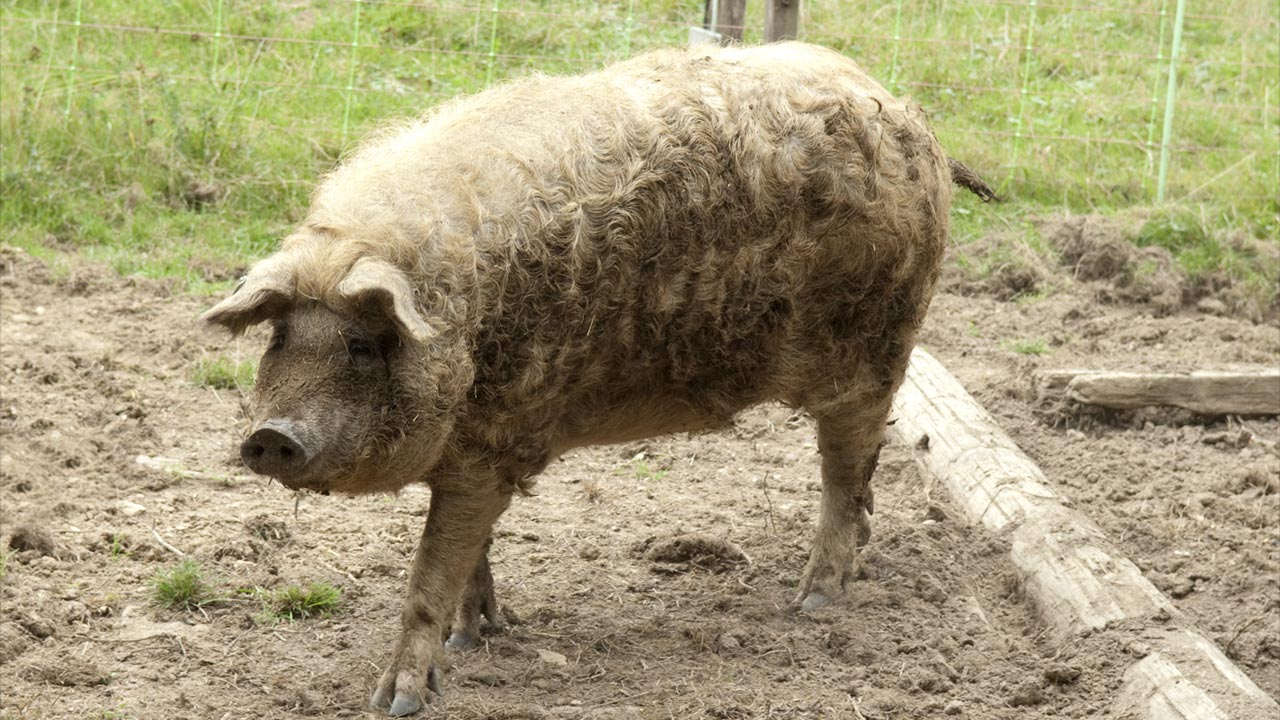マンガリッツァはハンガリーの家畜ブタで、19世紀中ごろにハンガリーとセルビアのブタ、ヨーロッパのイノシシを交配させて作られた。マンガリッツァの子豚には野生原種の子豚のように縞模様がある。
マンガリッツァの毛は厚く羊毛に似ている。ほかにカールした長い毛皮を持つブタは、絶滅したイギリスのリンカーンシャーカーリーコートの一種のみだ。密度の濃い毛皮と分厚い脂肪の層のおかげで、マンガリッツァは寒さに強く一年中外で飼育することができた。
体重の65-70%が脂肪という、世界でもっとも太ったブタの一種である。成長も早く13-14ヶ月で180-200 kgになり、脂肪がつき始めると200-300 kgになり、最大で500 kgを超えることもある。肉の味は良く脂肪には多くの不飽和脂肪酸が含まれる。
Mangalica pig
The Mangalica is a Hungarian breed of domestic pig. It was developed in the mid- 19th century by crossbreeding Hungarian pig breeds with European wild boar and a Serbian pig breed. The Mangalica piglets are striped like the piglets of the wild ancestor.
The Mangalica pig grows a thick, woolly coat similar to that of a sheep. There was only one other pig breed having a long coat with curly hairs, that is the extinct English Lincolnshire curly-coated pig. Because of their dense hair coat and the thick fat layer the Mangalica is protected against cold temperatures and can be kept therefore the whole year outside.
With a fat content of 65-70% of the body weight, the Mangalica is one of the fattest pig breeds in the world. It is growing rather quick. After 13-14 months the Mangalica weighs 180-200 kg, after fattening 200-300 kgand reaches a maximum of over 500 kg. Their meat is very tasty and the fat contains a high percentage of unsaturated fatty acids.

